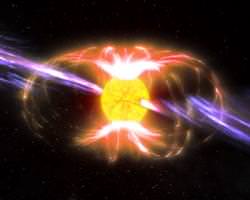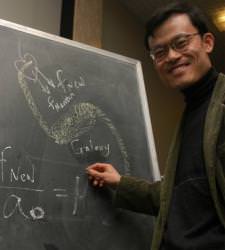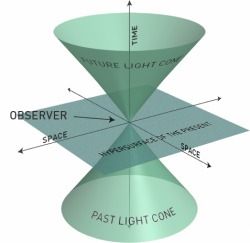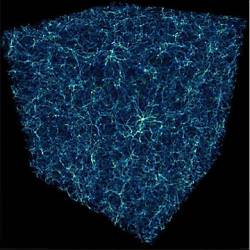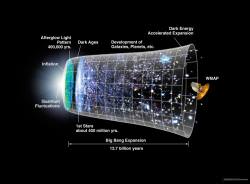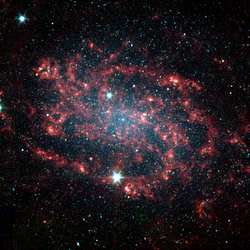Pulsars are fast-spinning, highly radiating neutron stars. Most pulsars emit radio, X-ray and gamma radiation at regular intervals (usually periods of a few milliseconds to a few seconds), in fact many pulses keep the accuracy of the most accurate atomic clocks on Earth. However, occasionally, these rapidly rotating bodies undergo a violent change, blasting massive quantities of energy into space. Although short-lived (a fraction of a second), the observed explosion packs a punch of at least 75,000 Suns. Is this a natural process in the life of a pulsar? Is it a totally different type of cosmic phenomena? Researchers suggest these observations may be a different type of neutron star: magnetars disguised as pulsars (and without an ounce of dark matter in sight!)…
Neutron stars are a product of massive stars after a supernova. The star isn’t big enough to create a black hole (i.e. less than 5 solar masses), but it is big enough to create a tiny, dense and hot mass of neutrons (hence the name). Due to the “Pauli exclusion principal” – a quantum mechanical principal that prevents any two neutrons from having the same quantum characteristics within the same volume – neutron stars are also predicted to be very hot. Intense gravity forces matter into a tiny volume, but quantum effects are repelling the neutrons. After the star has gone supernova, as neutron stars are so small (a radius of only 10 to 20 km), the small mass preserves the stars angular momentum, resulting in a fast-spinning, highly radiating body.
Much of the stars magnetism is also preserved, but in a vastly increased dense state. Neutron stars are therefore expected to have an intense magnetic field. It is in fact this magnetic field that helps to generate jets of emission from the magnetic poles of the rotating body, creating a beam of radiation (much like a lighthouse).
However, one of these flashing lighthouses has surprised observers… it exploded, blasting vast amounts of energy into space, and then continued to spin and flash as if nothing had happened. This phenomenon has recently been observed by NASA’s Rossi X-ray Timing Explorer (RXTE) and has been backed up by data from the Chandra X-ray Observatory.
There are in fact other classes of neutron star out there. Slow-spinning, highly magnetic “magnetars” are considered to be a separate type of neutron star. They are distinct from the less-magnetic pulsar as they sporadically release vast amounts of energy into space and do not exhibit the periodic rotation we understand from pulsars. It is believed that magnetars explode as the intense magnetic field (the strongest magnetic field believed to exist in the Universe) warps the neutron star surface, causing extremely energetic reconnection events between magnetic flux, causing violent and sporadic X-ray bursts.
There is now speculation that known periodic pulsars that suddenly exhibit magnetar-like explosions are actually the highly magnetic cousins of pulsars disguised as pulsars. Pulsars simply do not have enough magnetic energy to generate explosions of this magnitude, magnetars do.
Fotis Gavriil of NASA’s Goddard Space Flight Center in Greenbelt, and his colleagues analysed a young neutron star (called PSR J1846-0258 in the constellation Aquila). This pulsar was often considered to be “normal” due to its fast spin (3.1 revolutions per second), but RXTE observed five magnetar-like X-ray bursts from the pulsar in 2006. Each event lasted no longer than 0.14 seconds and generated the energy of 75,000 Suns. Follow up observations by Chandra confirmed that over the course of six years, the pulsar had become more “magnetar-like”. The rotation of the pulsar is also slowing down, suggesting a high magnetic field may be braking its rotation.
These findings are significant, as it suggests that pulsars and magnetars may be the same creature, just at different periods of a pulsars lifetime, and not two entirely different classes of neutron star…
Results of this research will be published in today’s issue of Science Express.
Source: AAAS Science Express

